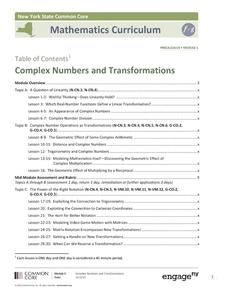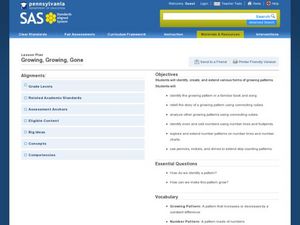Curated OER
Ratios, Unit Rates, and Proportions
Explore the concept of ratios, unit rates, and proportions. Learners convert fractions and percents to decimals. They discuss rates and where they can be found in the real world. A hands-on experiment and numerous flash cards and...
Curated OER
Ratio, Rates and Percentages
In this ratio, rates and percentages worksheet, 8th graders solve 22 various types of problems related to ratios, rates and percentages. They first write ratios in lowest terms and describe each of comparison stated. Students also solve...
Curated OER
Through India and Back
Students play a game based on "The Amazing Race" to practice using rates and fractions. In this fractions and rates lesson, students work in small groups competing to complete the tasks in the quickest time. At each stage of the journey,...
Curated OER
Decimal Baseball
Young mathematicians represent recorded information in decimal form. In this decimals lesson, learners play a "classroom friendly" basketball game in which pupils take 10 shots. Number of shots made out of 10 is recorded as a fraction...
EngageNY
Complex Numbers and Transformations
Your learners combine their knowledge of real and imaginary numbers and matrices in an activity containing thirty lessons, two assessments (mid-module and end module), and their corresponding rubrics. Centered on complex numbers and...
Curated OER
Math Survey
This math worksheet requires self-assessment of personal feelings regarding mathematics. Beginner mathematicians rate themselves on various aspects of math as well as share what they feel to be their strengths and weaknesses in the...
Curated OER
Discovering Math: Computation
Middle schoolers add, subtract, multiply, and divide rational numbers. They find the square and the cube of numbers. They create a game incorporating computation on rational numbers. Everyone works together to write and evaluate...
Curated OER
Growing, Growing, Gone
Budding mathematicians identify growing patterns in numbers and songs then create their own patterns. They look at number patterns and language patterns and then create their own using money and footprints.









